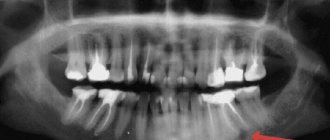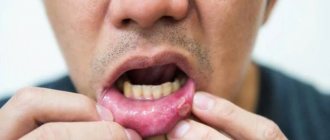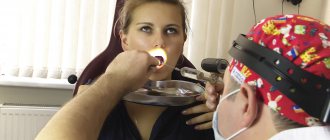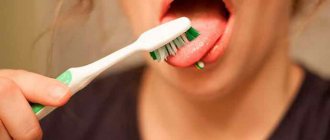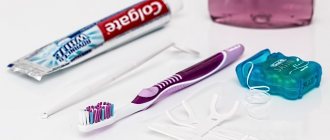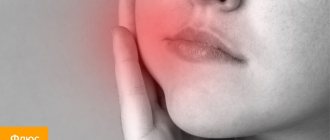Traditional methods of treating periodontitis
Today, dentists can offer many medicinal methods for treating periodontitis. However, some still prefer to deal with this problem with the help of “grandmother’s recipes.” Is it worth starting treatment for periodontitis with folk remedies or is it still necessary to go to the doctor?
Periodontitis is an unpleasant disease from any point of view. It causes not only bleeding and painful sensitivity of the gums, loosening and displacement of teeth, but also bad breath, and also makes a person’s appearance rather unattractive. If treatment is not started in time, the acute local process will become chronic, and may even lead to tooth loss.
How to fight periodontitis
A dentist’s help with periodontitis involves making a correct diagnosis and prescribing adequate treatment, depending on the severity of the disease and the individual characteristics of the patient’s body. After carrying out the necessary medical procedures in a dental clinic, treatment of periodontitis should be continued at home. For this purpose, special solutions, medicinal herbs and various folk remedies are used.
Folk remedies
Improving and treating gums with periodontitis using folk remedies is possible only after professional sanitation of the oral cavity. If plaque and tartar are not removed, the gum mucosa will be constantly injured, and pathogens will cause inflammatory processes. Let's say you did everything right: you visited a doctor, performed professional hygienic cleaning, took a course of medication (if it was prescribed). Here's what else might help:
- Beekeeping products Honey and propolis have always been used for stomatitis - their safety and effectiveness make it possible to recommend them even to small children. And if you add viburnum or chokeberry to healing honey, you can get an excellent remedy for periodontitis. The mixture is prepared from one type of ground berries and honey in a 4:1 ratio, and is used as a dessert after meals. You can alternate viburnum and chokeberry daily. The duration of taking this tasty “medicine” is 25–30 days.
- Medicinal herbs For rinsing, a decoction of comfrey or an infusion of oak bark with linden flowers are useful. Crushed comfrey roots should be simmered over low heat for 20 minutes, then cooled and used for daily rinsing twice a day. An infusion of oak bark is prepared in the same way, but after boiling, linden flowers are added to it and allowed to brew. The ratio of oak bark and linden blossom should be 2:1. You should rinse your mouth with this infusion 4-5 times a day until the symptoms disappear completely.
- Vegetable oils A mixture can be prepared from sea buckthorn and fir oil to lubricate the gums. the procedure using it is carried out twice a day, carefully rubbing the mixture into the gums using gauze, which is wrapped around a finger. To achieve the desired effect (that is, relieve inflammation), you need to carefully, with smooth circular movements, massage the gums in this way both from the outside and from the inside.
Modern means
To treat periodontitis at home, modern pharmacological agents are also used - ready-made medicinal rinses and special toothpastes. The solutions have anti-inflammatory, disinfecting, antimicrobial and analgesic effects. Many of them contain not only chemicals, but also extracts of medicinal herbs, some contain antibiotics. Therefore, when choosing a medicinal solution or toothpaste, consult your dentist to ensure that the product is not only effective, but also safe.
Expert opinion
The use of folk remedies in the treatment of periodontitis at the initial stage is quite effective - provided, of course, that the disease is not in an acute phase and does not require urgent dental intervention, for example, to remove tartar that causes inflammation. “Medicines from the people” cope well with the problem of bacterial plaque during the prevention of various inflammatory diseases. And for chronic periodontitis, treatment with folk remedies is the most effective “weapon” from the entire arsenal of preventive measures that can prevent relapses of the disease. However, it is recommended to use folk remedies only under the supervision of a doctor, since they often cause serious allergic reactions that complicate the course of the disease. Therefore, before you undertake periodontitis treatment on your own, visit a dentist who will give you all the necessary recommendations taking into account the characteristics of your body.
How to treat periodontal disease -
If you have been diagnosed with periodontal disease, the symptoms and treatment will be interrelated, etc. This disease is based on the phenomena of vascular sclerosis and bone tissue degeneration - the main methods of treatment will be physiotherapy and drug therapy, aimed primarily at stimulating blood circulation in the gums. In addition, selective grinding of the contacts between the lower and upper teeth is carried out, and at the first symptoms of mobility, teeth are splinted with crowns or fiberglass.
Treatment of periodontal disease at home is limited only to the use of finger massage of the gums, the use of special gels for the gums and toothpastes, as well as the ingestion of various vitamins, antioxidants and some other drugs (we will discuss them below). All other treatment will involve professional dental care in a physiotherapy office.
Finger massage of gums –
Finger massage of the gums for periodontal disease is carried out every day, in the morning after brushing your teeth. The direction of movement of the fingers should coincide with the direction of lymph flow in this area, i.e. you should make circular massaging movements, which should gradually move from the front teeth - towards the chewing teeth. The procedure time is 3-5 minutes for each jaw. In addition to this massage, you can periodically (several times a year) conduct physiotherapy courses.
The massage can be done without everything, or using one of the special gels that additionally stimulate blood circulation in the gums. For example, this could be the drug Asepta in the form of a gel, which contains propolis (a beekeeping product). This gel can also be used without massage, simply applying it to the gum margin after brushing your teeth in the morning and evening. However, it should be noted that you will not be able to cure periodontal disease at home only with finger massage and gum gel.
An important point is that gum massage cannot be performed against the background of gum inflammation (with swelling, redness or severe cyanosis of the gums, as well as in the presence of deep periodontal pockets and subgingival dental plaque). Otherwise, an intensification of the inflammatory reaction and the development of purulent abscesses in the projection of periodontal pockets is possible.
Physiotherapy for periodontal disease –
There is a large list of physiotherapeutic methods for treating gum periodontal disease - these are electrophoresis, phonophoresis, vacuum massage, vibration vacuum massage, magnetic therapy, diadynamic currents, laser therapy. The problem is that not even every dental clinic has its own physiotherapy department, and residents of large cities are luckier here (especially where there are university dental clinics at medical universities).
For example, in Moscow there is a large department of physiotherapy for periodontal diseases at the state clinic TsNIIS (Central Research Institute of Dentistry). You can get a referral for physical therapy from your dentist. Next, we will talk in detail about some of the main physiotherapeutic techniques that are used for periodontal disease...
- Electrophoresis and phonophoresis of heparin - heparin has a significant therapeutic effect in periodontal disease, because
it has the ability to reduce tissue hypoxia, normalizing the oxygen balance of tissues, microcirculation and transport of substances between blood and tissues. Heparin electrophoresis is carried out according to the usual method: make gauze pads from a sterile bandage under each electrode, soak each pad - first with 1.0 ml of distilled water, then from a syringe - 1 ml of heparin solution. The concentration of heparin in 1.0 ml of solution should be 5000 units. Electrodes with gauze pads are placed on the gingival edge of the alveolar process of the jaws, while the electrodes are carefully isolated from saliva with cotton rolls. Heparin is always administered from the cathode only. The duration of the procedure is from 12 to 15 minutes. The course of treatment is 10-12 procedures (in a row, daily). In addition, heparin can be successfully introduced into periodontal tissue not only by electrophoresis, but also using the phonophoresis technique on the Ultrasound T-5 apparatus. The duration of the phonophoresis procedure is about 7-10 minutes.
- Vacuum massage - this method is tens and hundreds of times more effective than regular gum massage, which you can do at home.
Vacuum massage is carried out using a special Kulazhenko vacuum apparatus or similar devices in a physiotherapy room. This massage leads to the destruction of part of the capillaries, which is accompanied by the release of histamine, which tends to stimulate blood circulation. Even more effective is the creation of vacuum hematomas along the transitional fold during vacuum massage of the gums. For this, the pressure is set to 1 atmosphere, and the nozzle of the device must be held in one place for 30 to 60 seconds - until a hematoma of 4-5 mm in size is formed. During one visit, you can do no more than 5-6 such hematomas (a full course - 8-12 procedures, with breaks between procedures - 3-5 days). This method further stimulates metabolic processes and blood supply to the gums.
- The use of a laser - the use of a helium-neon laser for periodontal disease is aimed at enhancing tissue trophism, metabolic processes, and blood circulation. The course of treatment is usually 12-15 sessions, and is carried out several times a year. A single laser exposure should not exceed 20 minutes.
Drug therapy for periodontal disease –
There are several groups of drugs that can be effective in increasing blood circulation and reducing hypoxia in periodontal tissues.
These may be antioxidants, anabolic steroids, the use of certain vascular drugs that stimulate peripheral circulation. 1) The use of antioxidants - clinical studies have shown that sclerosis of blood vessels in periodontal tissues leads to a significant decrease in oxygen delivery to the gums and the development of hypoxia, which triggers the process of sclerosis of bone tissue. Therefore, a number of drugs to stimulate oxygenation can be very useful. These drugs include substances with antioxidant properties. First of all, this can be vitamin E, as well as vitamins A, C, P and group B.
2) The use of anabolic steroids - the use of this group of drugs is justified primarily in men, because drugs have an androgenic effect. In women, this may result in a deepening of the voice and menstrual irregularities, which disappears only with discontinuation of the drug. In addition, the prescription of this group of drugs should always be preceded by a consultation with a therapist and endocrinologist regarding the absence of contraindications. The drug "Retabolil" is prescribed at a dose of 25-30 mg IM, only once every 3 weeks (the full course of treatment is about 5-7 injections).
3) The use of Trental - the possibilities of increasing blood circulation in periodontal tissues are limited by the limits of the ability of blood vessels to expand, and with significant sclerotic changes in blood vessels in periodontal tissues - physiotherapeutic effects on the gums alone are no longer enough. In this regard, in case of moderate to severe periodontal disease, it also makes sense to prescribe drugs for the treatment of blood microcirculation disorders.
For these purposes, the drug Trental can be used. This drug contains pentoxifylline, which increases the concentration of amino monophosphate in the smooth muscle of the vascular wall (by inhibiting the enzyme phosphodiesterase). An increase in the concentration of amino monophosphate in the membranes of smooth muscle cells helps to reduce the contraction of the smooth muscles of the vascular wall, thereby increasing the lumen of the capillaries.
Trental also affects the rheological properties of blood - in particular, it increases the elasticity of red blood cells. Blood capillaries in the area of interdental gingival papillae and periodontal tissue have a very small lumen, and therefore disturbances in the elasticity of red blood cells can lead to disruption of tissue trophism (i.e., their saturation with oxygen and nutrients). In addition, trental additionally inhibits erythrocyte aggregation, thereby preventing microvascular thrombosis, which is often observed in periodontal disease.
Prescription regimens: the drug is prescribed 2 tablets of 100 mg each - 3 times a day (16 days in total), after which the drug is taken 1 tablet of 100 mg - 3 times a day for another 1 month. However, the combined use of trental is even more effective. The combination includes a course of administering trental by electrophoresis (from the cathode) or by phonophoresis + oral administration of the drug according to the scheme indicated above.
Selective grinding of teeth –
When treating periodontal disease, it is very important to take into account that in such patients there is an excess of calcium in the hard tissues of the teeth, which leads to a delay in the physiological wear of the teeth. This would seem good, but in fact it leads to the formation of a traumatic bite in the area of the front teeth and their gradual fan-shaped divergence. Therefore, it is very important to send the patient to an orthopedic dentist for selective teeth grinding - in order to normalize the contacts between the upper and lower teeth.
In addition, delayed abrasion of the cusps on the chewing surfaces of the teeth, leading to the development of a traumatic bite in the area of the anterior teeth, can cause not only their fan-shaped divergence, but also the formation of a large number of wedge-shaped dental defects.
Splinting of mobile teeth –
The procedure for splinting teeth can be performed with fiberglass or artificial crowns, the need to choose between which will be dictated by the clinical situation in the oral cavity. Indications for the use of this method will be the emerging mobility of teeth, or their fan-shaped divergence (consisting in the displacement of teeth and an increase in interdental spaces). Read more about this method using the link above.
Use of toothpastes and gels –
Toothpastes and rinses from the Mexidol-Dent series are especially suitable for increasing blood circulation in the gums. They contain an antioxidant that helps reduce the level of hypoxia in periodontal tissues, which inevitably occurs due to hardening of blood vessels during periodontal disease. Toothpastes based on propolis can also have a stimulating effect on the blood supply to the gums (24stoma.ru).
What contributes to the development of periodontal disease?
Factors contributing to the development of the disease:
- vascular disease and a tendency to form plaques;
- hormonal disorders;
- weakened immunity;
- side effects of medications;
- smoking;
- lack of vitamins;
- structural features of the gums and jaw.
Symptoms to watch out for:
- Unexplained pale gums
- Redness
- Visible lengthening of the tooth due to the opening of the neck
- Increased sensitivity to hot and cold
- Periodic bleeding.
- Unexplained itching in the gums
- Loosening of teeth that begins with slight mobility.
Any of the above symptoms is a reason to consult a dentist. He will make a diagnosis and develop a treatment plan for periodontal disease. Whether it will be carried out entirely at home or with mandatory visits and medical procedures depends on the actual stage of the disease.
Prevention of periodontal disease
There are few preventive measures to prevent the appearance and development of periodontal disease, since the pathology is associated with genetic predisposition and metabolic disorders in the body. In general, doctors recommend maintaining overall oral hygiene through regular brushing and flossing.
You should also follow a certain diet for periodontal disease and to prevent the disease. It is recommended to eat more milk, vegetables, seafood, unrefined vegetable oils, and limit carbohydrate intake. The diet for the prevention and treatment of periodontal disease in adults should include a sufficient amount of raw vegetables and fruits, which promote self-cleaning of teeth from plaque and have a massaging effect on the gums, improving their microcirculation.
Treatment of gums at home
How to treat inflammation? There are many ways to treat gum inflammation at home. Dentists usually recommend antiseptic drugs with anti-inflammatory effects. The optimal treatment regimen is prescribed by the dentist after diagnosis. Let's consider the most effective treatment options.
Rinse with solutions
Rinsing with special solutions helps to quickly get rid of pain and stop inflammatory processes occurring in soft tissues. The compositions of the solutions disinfect the surface of the gums, destroying pathogenic bacteria. It is necessary to rinse your gums after every meal, 2 to 4 times a day. Some drugs in this group are used in pure form, others must be diluted in water.
To treat inflamed gums, dentists usually prescribe the following solutions:
- Furacilin;
- Chlorhexidine;
- Miramistin;
- Rotokan;
- Stomatophyte;
- Malavit;
- Listerine;
- Chlorophyllipt.
The listed drugs are usually used to prevent diseases of the oral cavity, reduce pain and reduce inflammation, but do not apply to independent means of treatment. Therefore, rinsing is usually prescribed in combination with other procedures.
Differences between periodontal disease and periodontitis
Patients often confuse the names, and therefore turn to dentists, complaining of periodontal disease. In 90-93% of cases, ordinary periodontitis is detected. It is widespread. Our disease is rare.
Periodontitis manifests itself through:
- pain on palpation, when brushing teeth;
- bleeding;
- redness of the gum margin;
- swelling;
- cyanosis.
In severely advanced cases, there may also be headaches, fever and severe toothache. All this leads to refusal of food and hygienic cleaning of the oral cavity.
By place of development:
- localized - a small lesion affecting only one tooth; often results from mechanical damage to tissue;
- generalized - damage to several teeth also affecting the gingival and bone tissue.
According to the nature of the course:
- acute - characterized by sudden pain attacks and rapid development of symptoms;
- chronic periodontitis is the transition of untreated acute periodontitis to a chronic form, in which pain and other symptoms practically disappear, but the disease progresses and deforms the tissue.
Teeth in danger: how to recognize the disease
Thanks to advertising, even children know about caries. But periodontal diseases are still a closely guarded mystery. Let's eliminate this gap. Periodontitis is an inflammatory disease that affects the tissue around the tooth and gums. As a result, loose teeth and other unpleasant “bonuses” appear.
Periodontitis - symptoms:
- gums bleed, especially under stress (chewing hard food, brushing);
- sensations of itching and pulsation under the gums;
- bad breath even after hygiene procedures;
- the mucous membrane around the teeth changes color;
- dark hard deposits on the enamel;
- periodontal pockets and tooth mobility appear.
Signs of the chronic form:
- inflammation and swelling of the gums;
- the mucous membrane becomes bright red;
- discharge of pus from periodontal pockets;
- throbbing severe pain;
- weakness, general malaise, possible fever.
We continue to understand the features of the disease: to understand whether you belong to the “risk group”, you need to know where gum inflammation comes from.
Periodontitis - causes:
Insufficient oral hygiene is the most common reason. Residues of food, falling under the gums, provoke the formation of microbes and the development of inflammation.
Food poor in vitamins and microelements.
- The predominance of soft food on the menu. The gums do not receive the necessary “massage” and there is insufficient blood flow.
- Complications of gingivitis and stomatitis.
- Weakened immunity, chronic diseases (diabetes mellitus).
- Very tight fit of teeth to each other (crowding).
- Allergies to medications and chemicals.
It’s simply amazing when some patients want to get rid of an illness that takes years to develop in a few days. People ask how to treat periodontitis with folk remedies and sincerely believe that this is a panacea. We responsibly declare that “grandmother’s spells”, miraculous rinses and ointments will at most ease the pain, but will not stop the development of the disease.
Professional dentistry involves complex treatment of periodontitis - more complex and lengthy, but effective.
- Consultation with a periodontist is the first step. The doctor will make an accurate diagnosis and determine a further treatment plan. After the x-ray diagnosis, the specialist will be able to answer the questions: is it possible to save the teeth or will some have to be parted with;
- will tell you how to treat periodontitis , how much the procedure will cost;
- coordinates treatment and prosthetic options;
- will determine the sequence of methods in the clinic.
Remedies for periodontal disease
There is no best cure for periodontal disease, and a specific cure has not yet been invented. At the moment, relief from the symptoms of this disease is achieved only through special procedures and complex treatment of periodontal disease with drugs rich in amino acids, proteins and antioxidants. Taking vitamins for periodontal disease also helps accelerate metabolism in periodontal tissues. What vitamins can a doctor prescribe? Typically, as part of drug treatment for periodontal disease, dentists recommend taking the following vitamins and minerals:
- vitamin B6 and vitamin B12 – if periodontal disease develops against the background of pathologies of the digestive system, diabetes mellitus, neurasthenia;
- folic acid – to activate all metabolic processes in the body;
- zinc – for bone tissue regeneration;
- calcium – for mineralization of bones and teeth;
- selenium - for antioxidant and immunomodulatory effects.
You should not self-medicate. The doctor determines which drugs for periodontal disease should be used in each specific case, based on the results of dental diagnostics and the general condition of the patient’s body.
